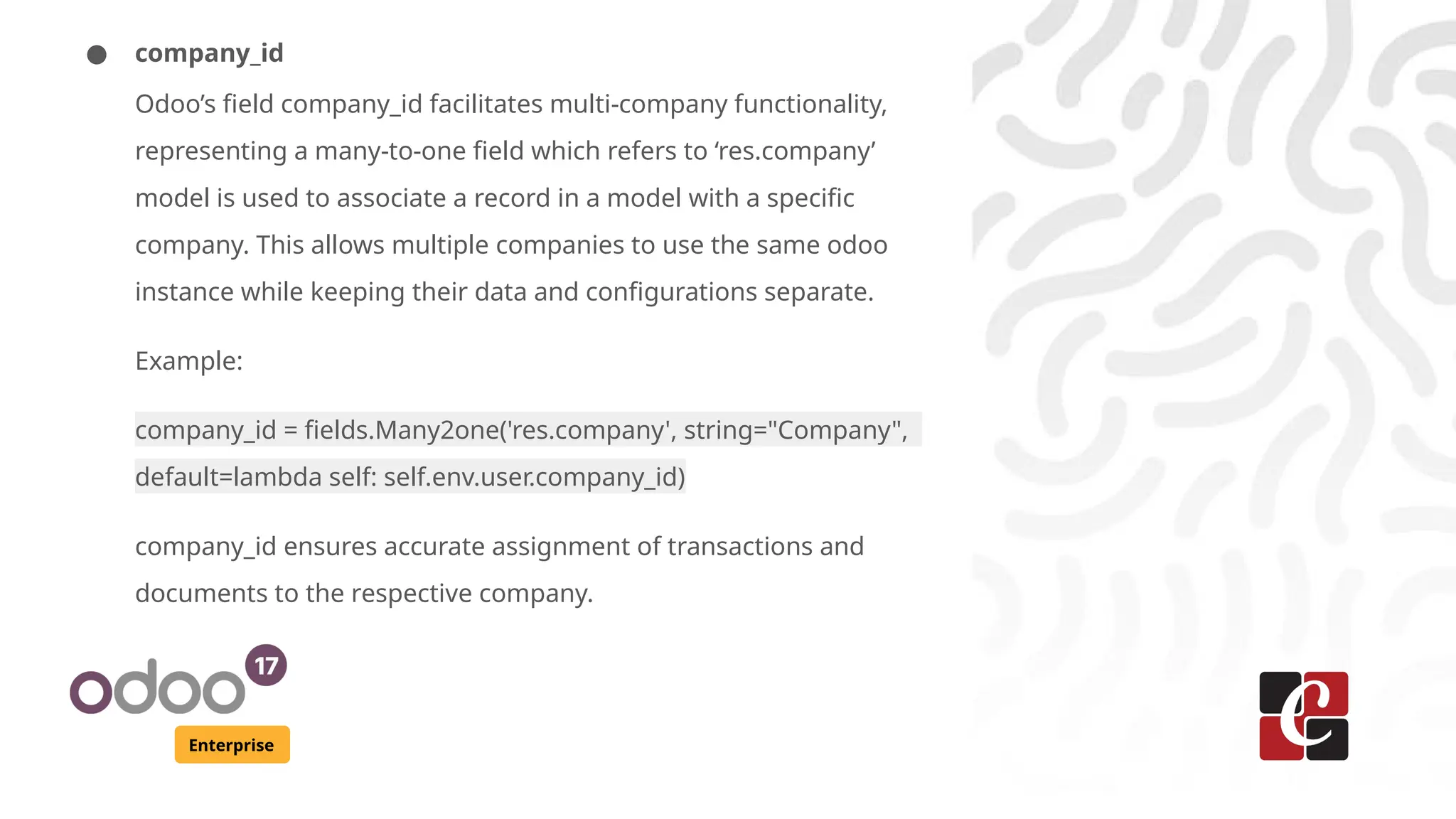The document discusses automatic and reserved fields in Odoo 17 Enterprise. It explains various automatic fields generated by the system, such as 'id', 'create_date', and 'write_uid', as well as reserved fields like 'name', 'active', and 'state', which serve specific functions within the system. These fields are integral for maintaining data integrity and tracking record creation and modifications in Odoo.
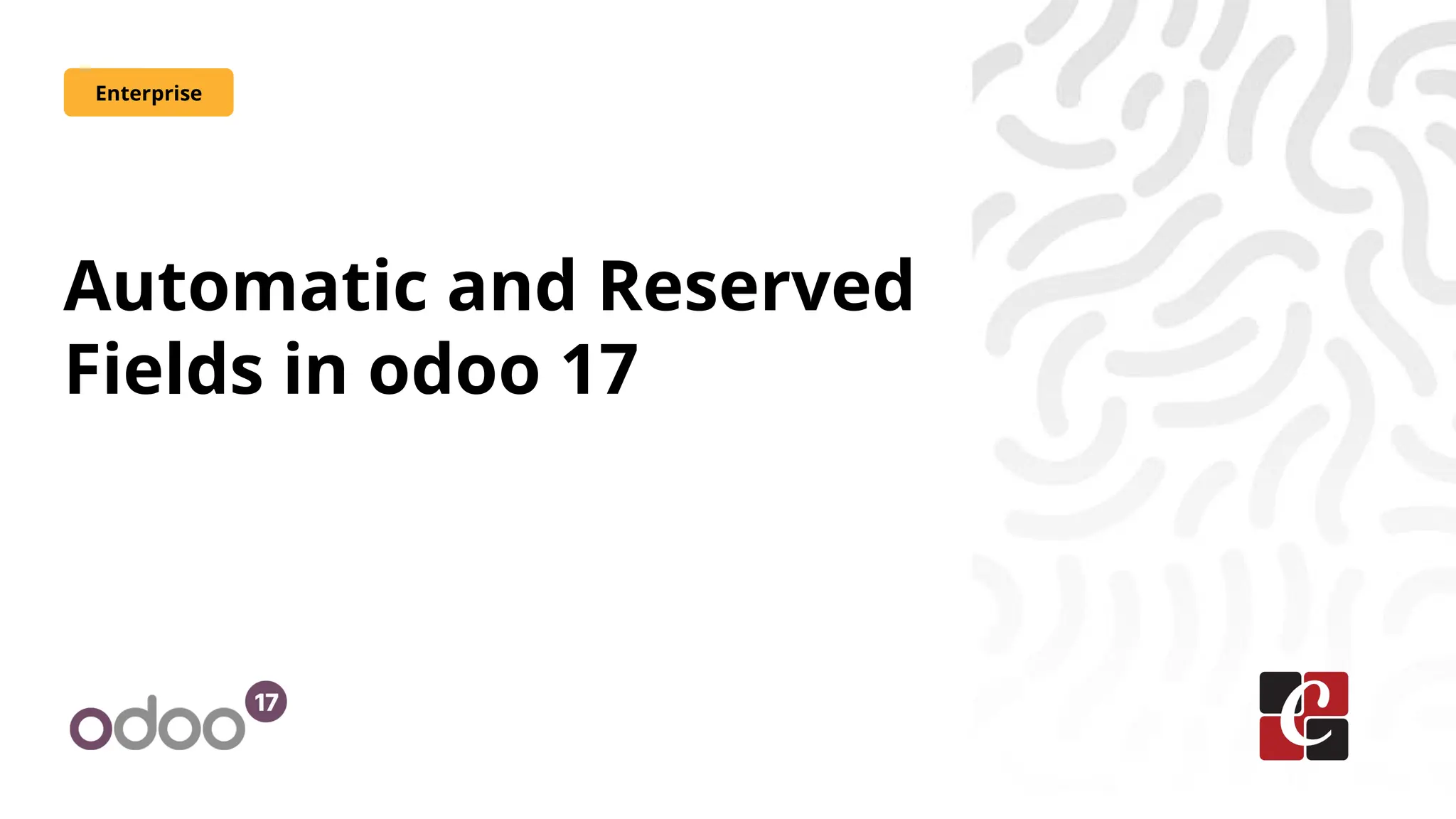
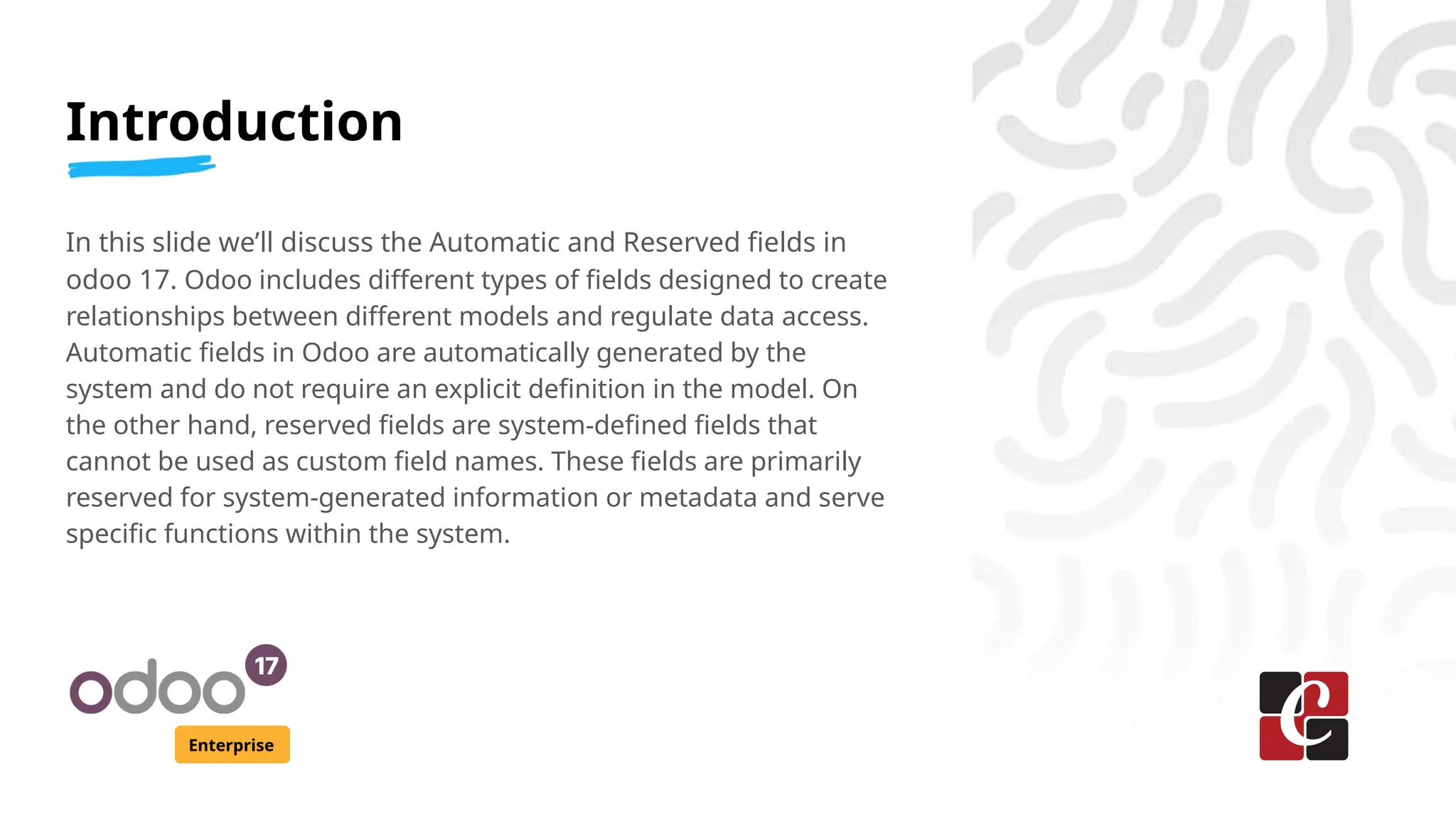
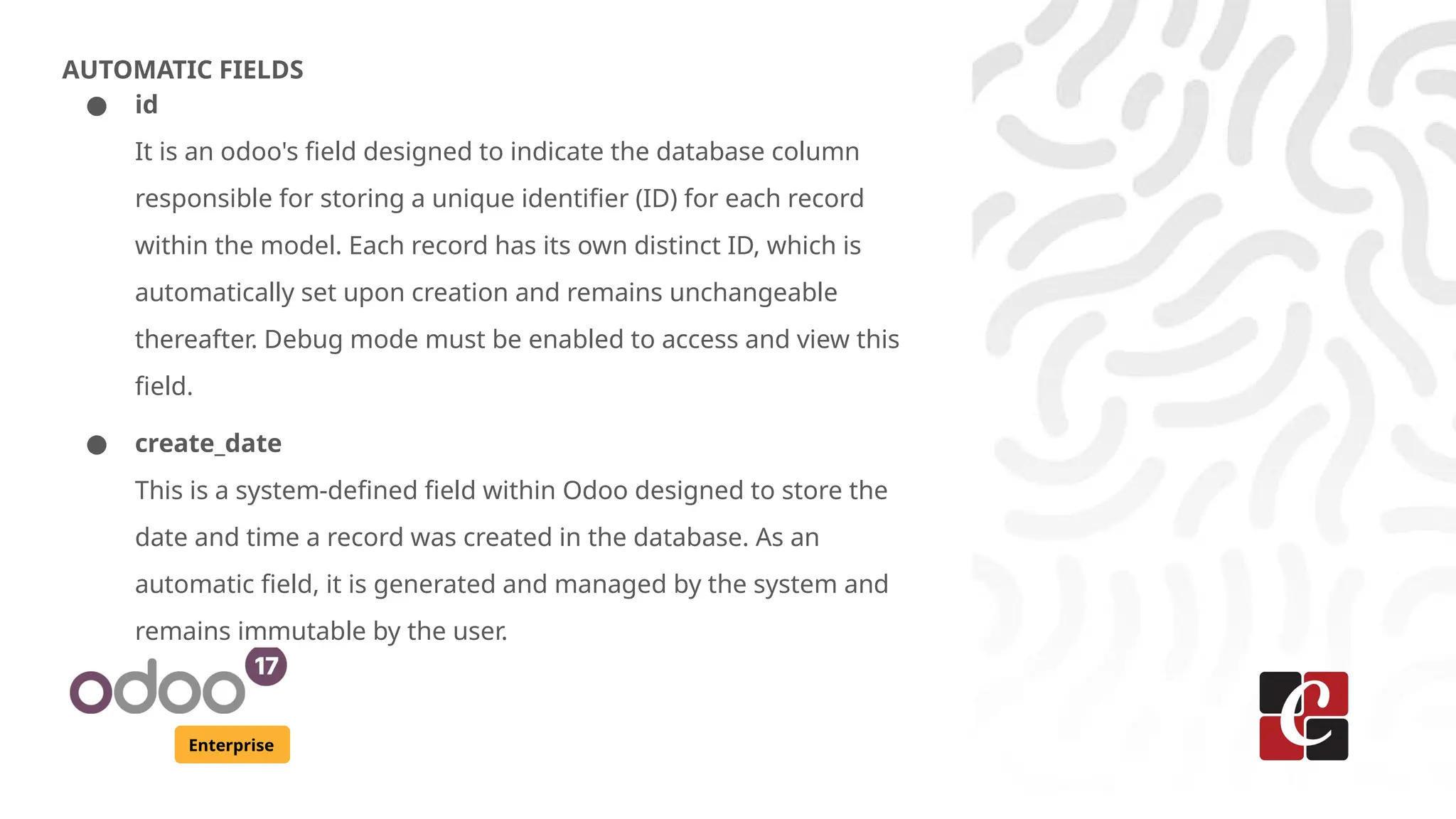

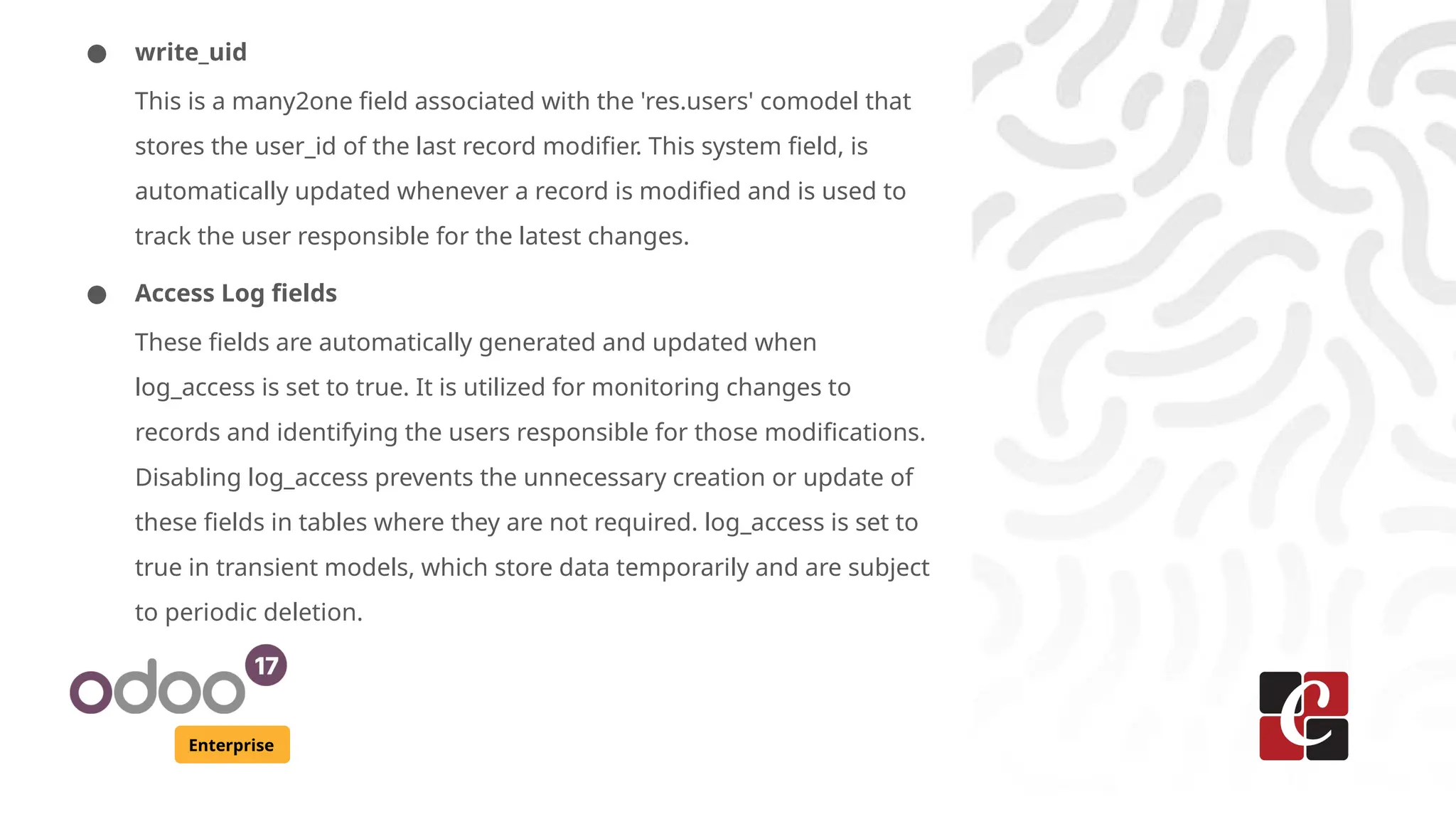
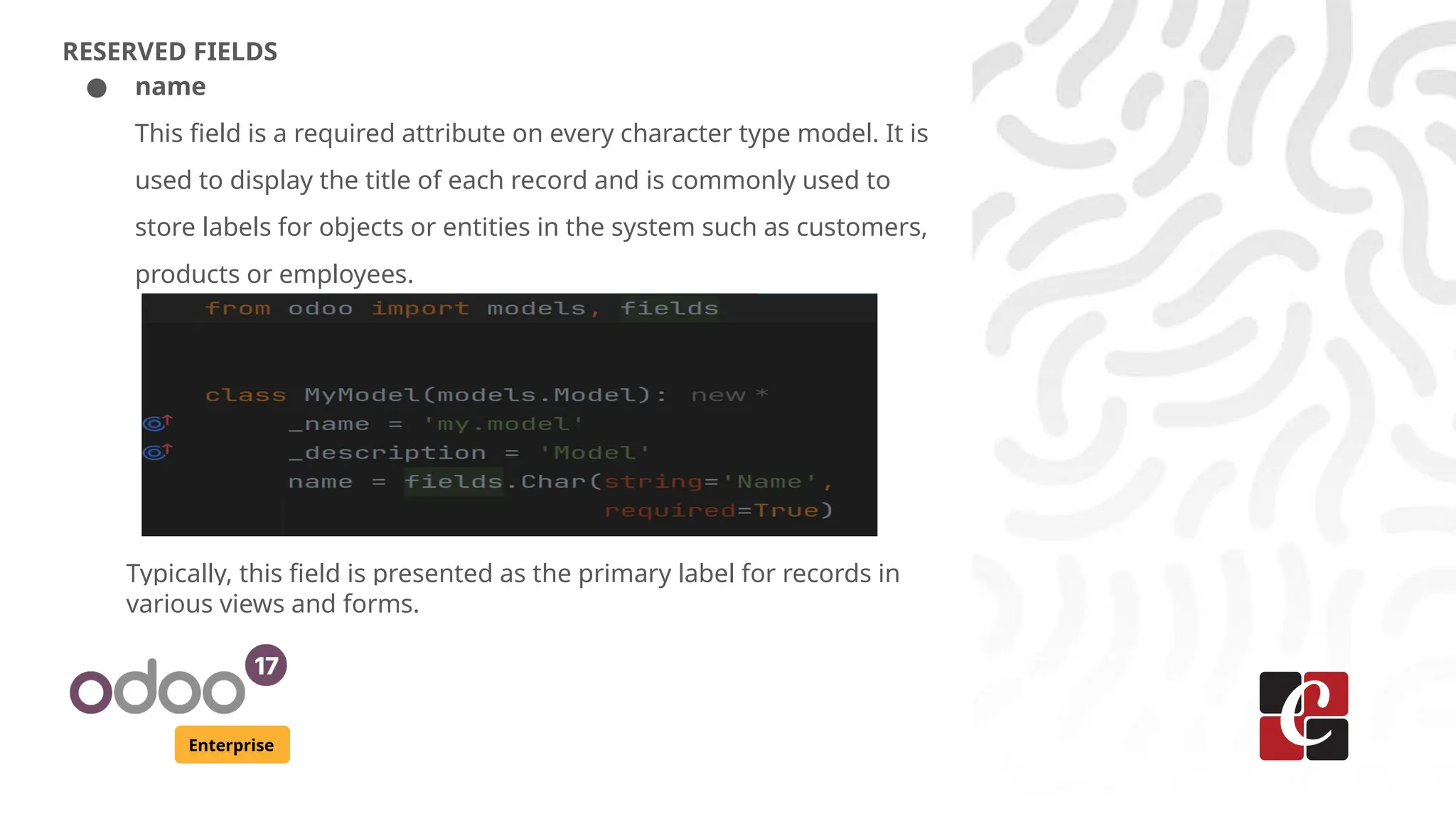
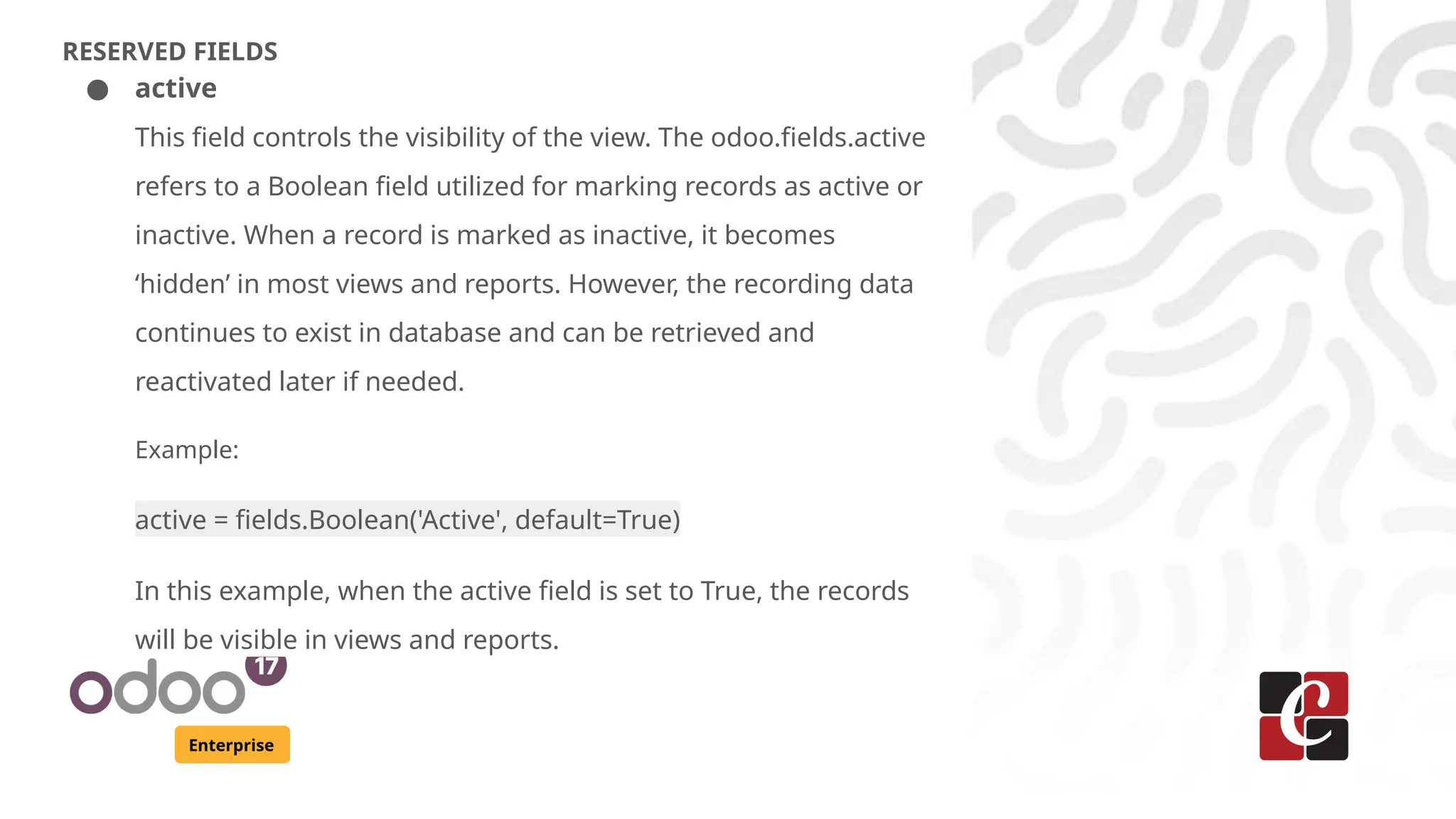
![Enterprise
● state
This field is a selection field used to indicate a state or condition for an
item in the model. It is commonly used to track the progress or
workflow of a record as it goes through various stages such as "draft",
"submit" etc. Each state value is defined as a tuple that contains a
string label and a unique identifier.
Example:
state = fields.Selection( selection=[ ('draft', 'Draft'), (done, Done)],
string='Status', required=True, readonly=True, copy=False,
tracking=True, default='draft')
The 'state' field helps articulate various actions or behaviors triggered
when a record transitions from one state to another.](https://image.slidesharecdn.com/automaticandreservedfieldsinodoo-241211070226-0d6270cb/75/Automatic-and-Reserved-Fields-in-odoo-Odoo-Slides-8-2048.jpg)
